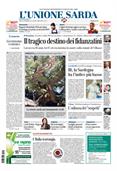Manuela Murgia, the RIS (Italian National Institute of Investigation) combs the Tuvixeddu Canyon: three hours of sampling and metal detector searches.
Investigators are looking for evidence from the examination of the clothing of the young woman found dead 30 years ago as part of a new murder investigation.They remained for about three hours in the Tuvixeddu canyon, in Cagliari, searching for traces or elements useful in the investigation into the death of Manuela Murgia , which occurred thirty years ago, with the investigation initially closed as suicide and then reopened as homicide.
The Carabinieri of the RIS of Cagliari analysed the land where the girl's lifeless body was found on 5 February 1995 .
Specialists used a metal detector to find—even after thirty years— the missing part of the belt buckle the girl was wearing: searches that yielded no findings. Furthermore, a plant compatible with a leaf fragment found on the girl's clothing was catalogued. A series of soil and vegetation samples were then taken to compare them with the findings from laboratory tests performed on the young woman's clothing.
The RIS arrived around 12:50 p.m., from Via Falzarego, and then proceeded to the point in the canyon where Manuela Murgia's body was found. The inspection, ordered by the Cagliari Prosecutor's Office, was scheduled in preparation for the expert report requested by the judge, due by November 30th and in preparation for the preliminary hearing scheduled for December 11th.
A further step in the murder investigation opened last March by the prosecutor Guido Pani , after a long battle fought by the girl's family who never believed the suicide theory.
The only suspect is her ex-boyfriend Enrico Astero, now 54.
The investigation was reopened after the opinion of coroner Roberto Demontis , who ruled it a homicide: the girl, after having engaged in forceful sexual intercourse, was allegedly run over and killed. Her body was subsequently transported—and dragged—into the Tuvixeddu canyon.
